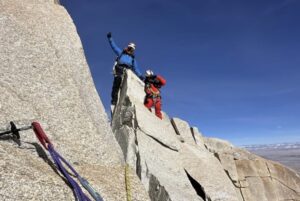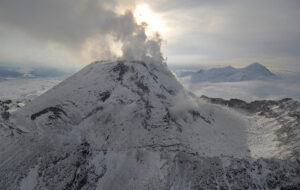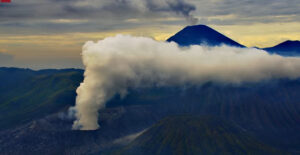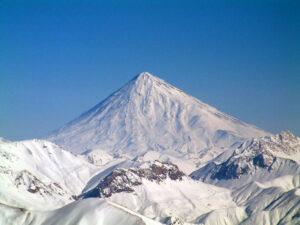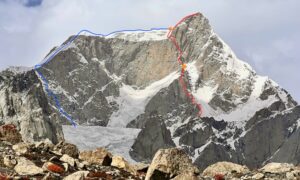There’s a lonely volcano in the South Atlantic Ocean, covered in snow and concealing a lake of fire.
When British volcanologist Emma Nicholson climbed to the top and gazed into the caldera last November, she became the first human to do either.
Mount Michael rises 843m above sea level, about 1,600km north of Antarctica. An active stratovolcano, it holds dense, viscous lava that has formed its flat, triangular sides during eruptions.
Nicholson piloted a drone inside.
“Suddenly, we could see this small lava lake right deep down inside the crater,” Nicholson told National Geographic. “It was certainly not maybe the lava lake that you’d naturally conjure to mind…but it was unmistakably lava close to the surface, feeding the gas plume we were measuring.”
View this post on Instagram
Nicholson led the team that made the first ascent of Mt. Michael. Their purpose was confirming the crater indeed held molten lava, according to National Geographic. Volcanologists now hope Nicholson’s research can help improve understanding of how the volatile structures work.
Lava lakes, like the one Mt. Michael hosts, are rare. Only eight of them exist on the planet with any consistency. On most volcanoes, molten rock solidifies quickly on the caldera surface after an eruption, sealing off the lava below.
That rarity is what made Nicholson’s first ascent pivotal.
“The balance between heat coming up from within the vent system of the volcano must be perfectly balanced with the rate of cooling to keep the lava in its molten state,” Nicholson explained.
Mt. Michael hunkers alone in the South Sandwich Islands, a British territory. It first attracted attention in the late 1990s when a British Antarctic expedition noticed consistent smoke from the peak. For two decades, evidence that it could contain a lava lake began to prevail.
View this post on Instagram
The definition of remote
But the South Sandwiches are hard to get to, and working conditions there are challenging. Glaciers coat the actively volcanic islets, which cover just 310 sq km. (For context, Luxembourg is 2,590 sq km.) The sparsely populated Falkland Islands harbor the nearest traces of human civilization — 1,550km away.
“If you stand on Saunders Island,” Nicholson told Nat Geo, “your closest other humans are on the International Space Station. That’s the definition of remote.”

Saunders Island, the location of Mount Michael. See the plume of smoke rising from the top corner of the island. Photo: NASA via Wiki Commons
That’s not to mention how harsh the weather can be. On Nicholson and company’s first ascent, 90% humidity and 70-95kph winds combined to coat the team’s clothes and equipment with rime. The risk of hypothermia was constant.
The first ascent of a mountain where the other closest humans are in space begs one increasingly central exploration question: How many more firsts are left?

